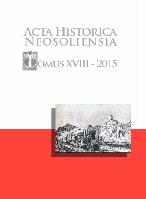Pomníková kultúra v Bratislave
Culture of Monuments in Bratislava
Remembering – Visualisation of Power – Representation
Author(s): Elena MannováSubject(s): Cultural history, Modern Age, Recent History (1900 till today)
Published by: Filozofická fakulta Univerzity Mateja Bela
Summary/Abstract: Power relations in Bratislava (Pressburg, Pozsony) were never completely coincident with power constellations in the whole state. That is the reason that the arena of monuments developed ambiguously and sometimes different from official versions of the past. In the Habsburg Monarchy the monuments reflected local traditions (Hummel, Maria Theresia) and slow Magyarization of public life (Petőfi). The new Czechoslovak Republic started with prompt removal of symbols of the previous era but the Slovakization of public space with monuments needed more time (Hviezdoslav, Štefánik). During the Slovak state 1939 – 1945 the “Czech” lion disappeared from Štefánik’s monument and Bernolák’s statue and tablets to Štúr, Hlinka, but also Adolf Hitler were unveiled. After WW2 and after 1948 new monuments celebrated 1/ heroes of anti-fascist struggle, 2/ revolutionary traditions of workers and first of all of the communist party and 3/ Slovak cultural personalities. Especially in 1970s the federalization of the Czechoslovak Socialist Republic affected the boom of monuments for figures of the Slovak national history. After 1989, compromised symbols vanished and new statues and tablets commemorate national religious and military „heritage“ that was „forgotten“ until that time, holocaust, victims of communism, memory of minorities but also – when it was suitable for political occasion – “Hungarian danger”. Prestigious space is occupied not only by Slovak national heroes (Svätopluk, Štefánik), but by facetious statuettes attractive for tourists, too. Stormy discourses, conflicts and protests against building of some monuments show that this form of visualization and actualization of the themes from the past is still not obsolete and serves as means of symbolic politics.
Journal: Acta historica Neosoliensia
- Issue Year: 18/2015
- Issue No: 1
- Page Range: 236-257
- Page Count: 22
- Language: Slovak

